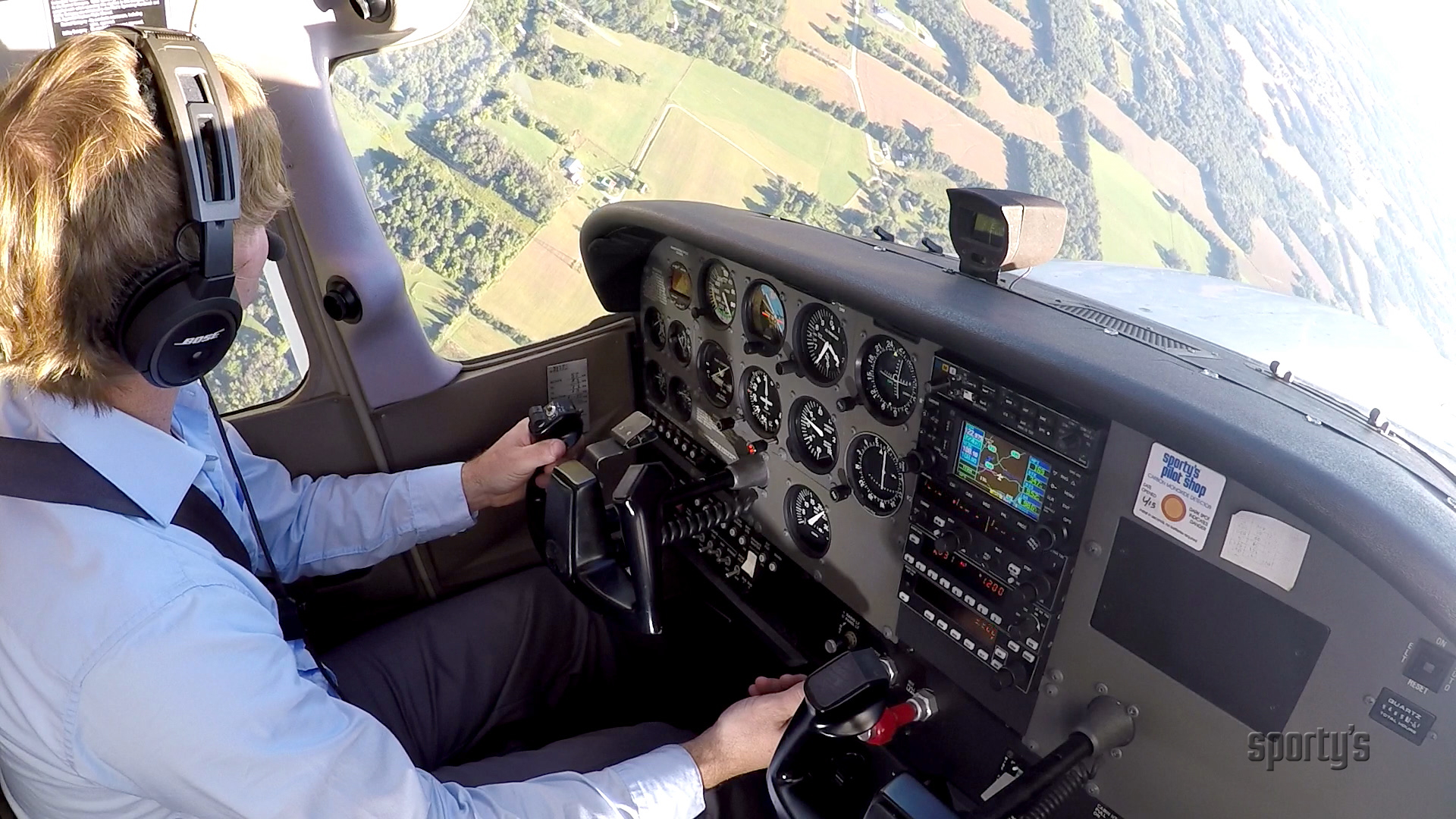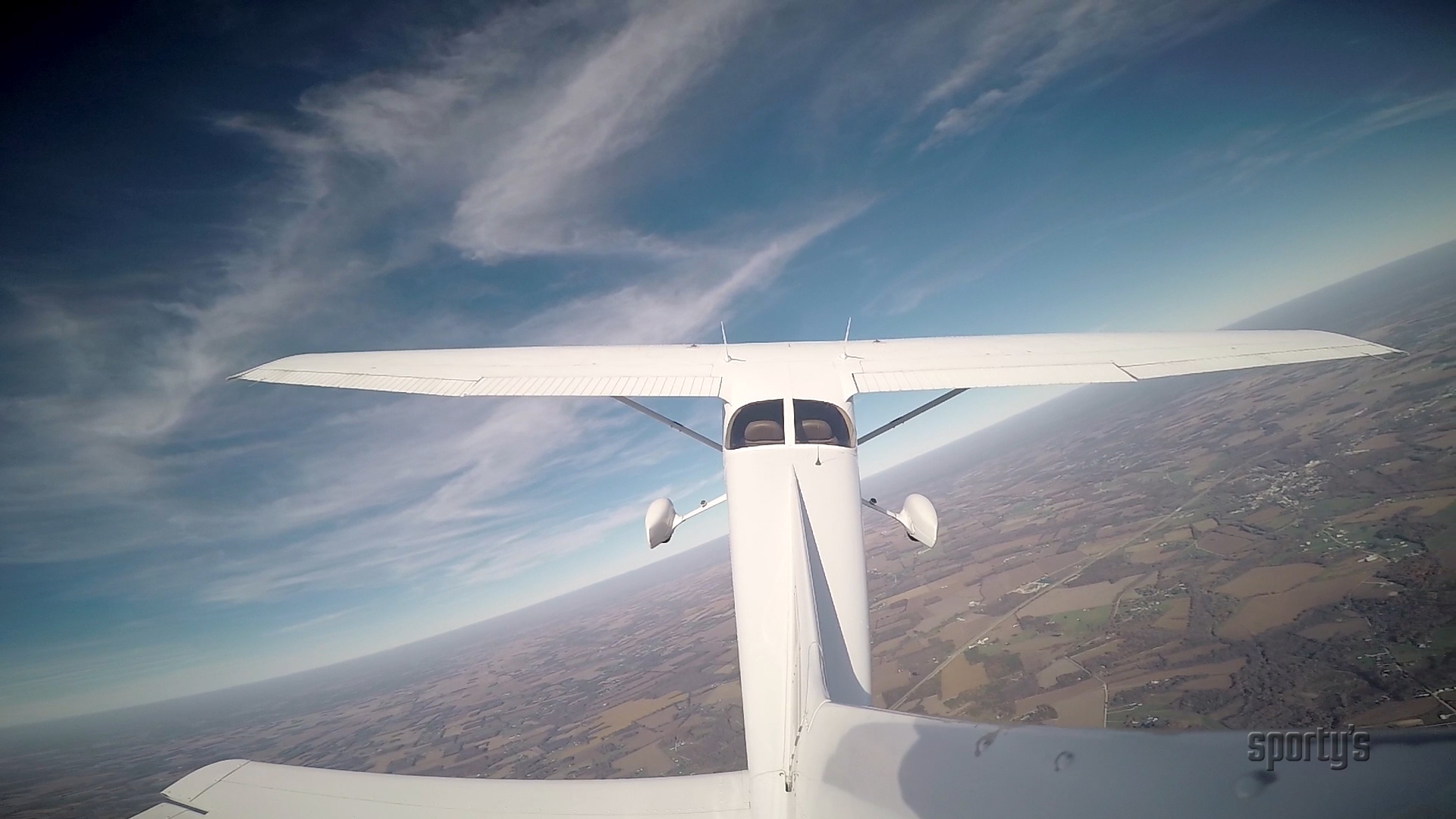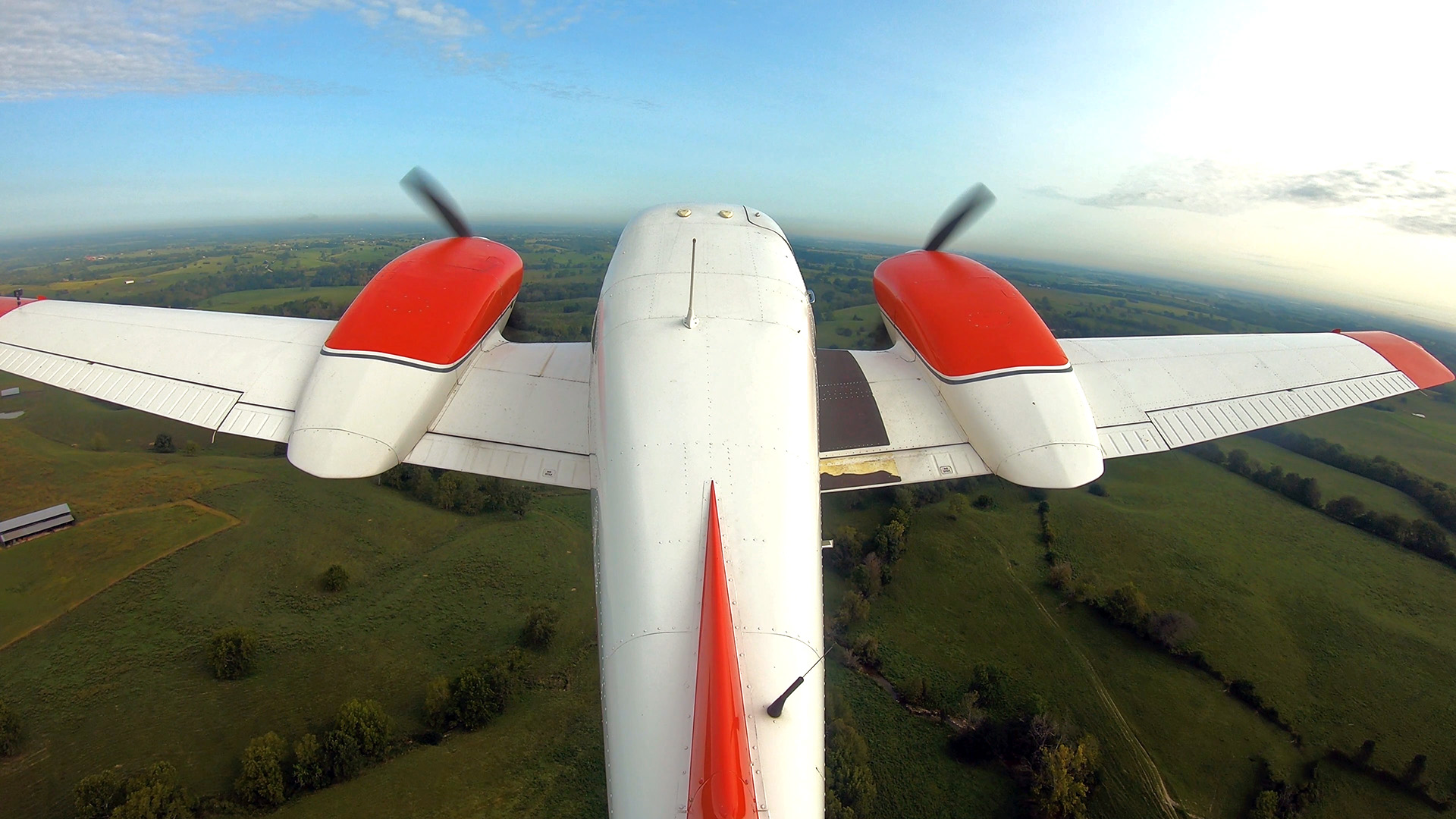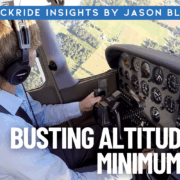Checkride Insights: Busting Altitude Minimums
|
Getting your Trinity Audio player ready...
|
Editor’s Note: Flight Training Central is excited to welcome Jason Blair as a regular contributor with his new monthly series, Checkride Insights. As an FAA Designated Pilot Examiner with over 2,500 pilot certificates issued, Jason brings a unique perspective from the other side of the checkride table. In each installment, he’ll share lessons, trends, and real-world scenarios from his extensive experience—offering practical takeaways for both students and instructors. Whether you’re preparing for your first practical test or guiding others toward certification, Jason’s insights will help you approach your next checkride with confidence.
Busting Altitude Minimums
by Jason Blair
If you’ve been around flight training long enough—either in the left seat or the examiner’s seat—you know this truth: many checkride failures don’t come from doing the wrong maneuver, but from doing the right maneuver at the wrong altitude.
Altitude discipline is one of those fundamental expectations that quietly underpins almost every maneuver in the Airman Certification Standards (ACS). It’s not just about airspace compliance or obstacle clearance—it’s about safety, performance, and demonstrating command of the aircraft. Yet year after year, a consistent cause of disapprovals on practical tests stems from pilots flying maneuvers at altitudes outside ACS standards.
Let’s break down a few of the most common altitude-related errors and why they matter.
Ground Reference Maneuvers: Low Is the Standard

The ACS mandates that ground reference maneuvers be conducted between 600 and 1,000 feet AGL.
Ground reference maneuvers—S-turns, turns around a point, rectangular courses—are often dismissed by pilots as basic or even boring. Ironically, they’re still frequent tripping points for applicants, especially when it comes to altitude.
The ACS mandates that ground reference maneuvers be conducted between 600 and 1,000 feet AGL. This isn’t a suggestion—it’s a requirement. Flying them at 1,200 feet AGL or dropping down to 400 AGL can both lead to a checkride bust.
Some pilots miscalculate the terrain elevation beneath their maneuvering point, especially in undulating or rural areas without reliable elevation references. Others climb too high out of habit or discomfort with low-altitude maneuvering, or fail to descend to the correct altitude after completing another maneuver.
These maneuvers are intended to demonstrate control of the aircraft relative to the ground. That means being close enough to perceive drift, manage bank angles appropriately, and correct for wind variation.
Accelerated Stalls Below 3,000 Feet AGL? That’s a No-Go

The ACS for commercial pilots clearly states that accelerated stalls must be recovered no lower than 3,000 feet AGL.
One of the most frequently busted altitude minimums comes during accelerated stalls. The ACS for commercial pilots clearly states that accelerated stalls must be recovered no lower than 3,000 feet AGL—not MSL.
Too often, pilots set up for the maneuver at 3,000 feet MSL over relatively high terrain and end up recovering at barely 2,000 feet AGL—or worse. That’s not just a bust; it’s dangerous. Accelerated stalls, by nature, involve a rapid and steep onset of aerodynamic stall during maneuvering flight. They can result in abrupt wing drops, unexpected spin entries, and more aggressive altitude loss compared to power-off or power-on stalls.
Smart pilots (and CFIs) plan to start the maneuver higher—say, 3,500 or even 4,000 feet AGL—so that recovery is completed with margin to spare.
If you’re flying in an area where terrain elevation is 1,200 feet, you must be recovered from the maneuver no lower than 4,200 feet MSL. Anything less risks violating the standard.
Power-on and power-off stalls only require recovery by 1,500 feet AGL, but too often pilots forget to adjust to the higher altitude for accelerated stalls. A simple fix is to just perform all stall demonstrations at a higher altitude.
Multiengine Recovery Altitudes

The ACS states that most multiengine maneuvers be recovered by 3,000 feet AGL.
For multiengine checkrides, altitude minimums can get even more nuanced. Many single-engine failure simulations and demonstrations require higher altitudes.
The ACS states that Vmc maneuvers, engine shutdown procedures, Vyse demonstrations, and accelerated stalls must be recovered by 3,000 feet AGL. However, some manufacturers have their own higher requirements—a few requiring recovery by 4,000 feet MSL. The Twin Comanche, for example, requires recovery by 5,000 feet MSL, which can be challenging in areas with frequent low clouds.
Always reference manufacturer guidance in the AFM/POH or flight supplements for maneuver-specific altitude requirements. The ACS minimums apply unless the manufacturer specifies a higher limit—in which case, the higher limit is the standard. Not following this on a practical test is almost guaranteed to result in failure.
If you’re prepping for a multiengine ride, read the maneuver-specific notes in the AFM or supplements. Don’t rely on “what the last guy did” or what your CFI told you without verification. As pilot in command, you are responsible for meeting both the ACS standards and the airplane’s limitations.
The Clouds/Weather Trap on Checkride Day
Everyone wants to get their practical test done. But sometimes, the weather just doesn’t cooperate.
Applicants often cheat their altitudes too low on checkride day when clouds limit the ability to climb to the appropriate altitude for maneuvers. The key is to evaluate the weather and determine if sufficient ceilings exist to complete all required maneuvers within ACS (or manufacturer) standards.
If you can’t, it’s time to discontinue or reschedule the test. Don’t fall into the “I’ll try it lower” trap. It frequently leads to busting minimum altitudes or VFR cloud clearances—and ending up with a disapproval.
Discipline Is a Demonstration of Proficiency
Every practical test is a performance, and altitude discipline is one of the clearest indicators of a pilot’s overall proficiency. Setting up a maneuver at the right altitude, briefing it properly, and executing it within standards shows not just compliance with the ACS, but also judgment, planning, and professionalism.
Before each maneuver in the practice area, ask yourself:
- Am I at the correct AGL altitude?
- Have I accounted for terrain elevation in my MSL setup?
- Is my recovery complete above the required minimum?
- Does my aircraft require a higher altitude for safe performance?
Practice makes permanent. Don’t just plan to fly “the right way” on checkride day—practice that way every time. If you don’t, bad habits will resurface under pressure.
And if you’re a CFI, insist on precision. Don’t accept “close enough” when it comes to altitude. On checkride day, “close enough” can be the difference between a temporary certificate and a pink slip.
- Checkride Insights: Busting Altitude Minimums - September 1, 2025
- Unintended Consequences of Reducing ATP Minimum Hours - July 14, 2025
- Pilot training experience requirements—just do what the regulation says! - April 14, 2025


Awesome write up. You should add circling altitude. I busted my IFR checkride today because I climbed back into the clouds. Added too much power.